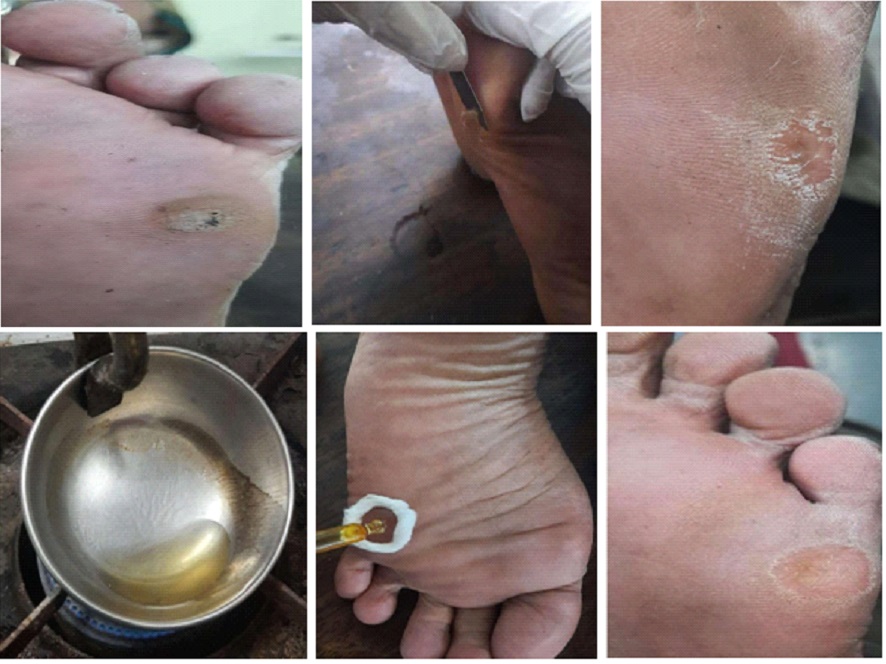Effect of Snehadahana in the Management of Kadara - A Case Report
Abstract
Kadara is a Kshudra Roga, first mentioned by Acharya Sushruta. It is a condition which causes extreme pain and discomfort to the affected person. Kadara may be correlated to Corn based on the causative factors, site of the swelling, clinical and other features. The incidence of corn in India is more than 10 million cases per year. The treatment modalities available at present in the modern science are the usage of corn caps, salicylic acid paints, cryotherapy and surgical excision. All theses modalities are associated with a high rate of recurrence. Snehadahana is mentioned as the line of management in Kadara after Utkarthana by all the Acharyas. Acharya Bhoja specifically mentions Tila Thaila as the Sneha dravya to be used for Agnikarma. In the present study, a 53 year old female patient, who visited the OPD of Sri Jayendra Saraswathi Ayurveda College and Hospital with a case of Kadara, was selected for Snehadahana. Chedana was done prior to Snehadahana. The procedure was carried out as 4 sittings, once a week, for a period of 4 weeks. Two follow ups were done at an interval of 14 days, after the fourth sitting of Snehadahana. There was complete healing of the wound and no recurrence seen until the follow up period.
Downloads

Copyright (c) 2023 International Journal of Ayurveda and Pharma Research

This work is licensed under a Creative Commons Attribution-NonCommercial-ShareAlike 4.0 International License.






